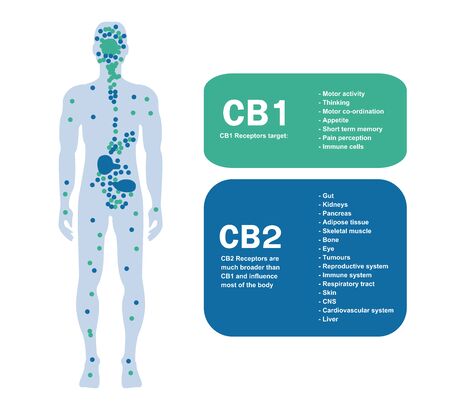Understanding the Impact of Chronic Illness in the UK
Chronic illnesses such as heart disease, type 2 diabetes, obesity, and certain types of cancer are significant public health concerns across the UK. According to recent NHS statistics, millions of Britons are living with at least one long-term condition, placing a considerable strain not only on individuals but also on families, communities, and the entire healthcare system. These conditions often develop over many years and can severely affect quality of life, leading to reduced mobility, increased hospital visits, and substantial healthcare costs. Importantly, a large proportion of these chronic illnesses are preventable through lifestyle changes. Early intervention and proactive prevention have never been more critical. By understanding which chronic diseases are most prevalent among Britons and recognising their far-reaching impact, we can begin to appreciate the vital role that physical activity and exercise play in reducing risk and promoting long-term wellbeing.
Physical Activity Guidelines for British Adults
Staying active is essential for reducing the risk of chronic illnesses, and the NHS provides clear guidance to help Britons integrate movement into their daily routines. The recommendations are not one-size-fits-all; they are thoughtfully adapted for different age groups and abilities, ensuring everyone can find an approach that works for them.
NHS Physical Activity Recommendations by Age Group
| Age Group | Recommended Weekly Activity | Additional Notes |
|---|---|---|
| Adults (19-64 years) | At least 150 minutes of moderate-intensity activity, or 75 minutes of vigorous-intensity activity, plus muscle-strengthening exercises on two days | Mix activities such as brisk walking, cycling, swimming, and yoga |
| Older Adults (65+ years) | Same as adults, but focus more on activities that improve balance and coordination | Include tai chi, gardening, or dancing to help maintain independence |
| People with Disabilities or Long-term Conditions | Aim for at least 150 minutes per week, adjusted based on ability and health status | Consult with healthcare professionals; adapt activities to suit personal needs |
Understanding Intensity Levels
Moderate-intensity activities include things like brisk walking or gentle cycling—where you can talk but not sing. Vigorous-intensity activities, such as running or energetic sports, will make you breathe hard and fast.
Muscle Strengthening and Balance Matters Too
The NHS also highlights the importance of muscle-strengthening activities—think resistance bands, bodyweight exercises, or even heavy gardening. For older adults especially, balance-focused movements like standing on one leg or gentle stretching routines are key to reducing falls and promoting longevity.
Tuning In to Your Own Pace
No matter your starting point, the focus is on steady progress rather than perfection. Even small increases in movement can provide meaningful health benefits. If you’re new to exercise or have a health condition, it’s always wise to start gently and seek advice from your GP or a qualified fitness instructor.

3. Everyday Ways to Get Moving
Fitting physical activity into a busy British lifestyle doesn’t have to be complicated. In fact, there are countless practical ways to weave movement into your daily routine without feeling like you’re making a huge effort. Walking is one of the easiest and most accessible forms of exercise; whether it’s taking a brisk stroll to the local shops, walking the dog through the countryside, or simply choosing the stairs over the lift at work, every step counts. For those living in towns and cities, cycling offers both a healthy commute and an eco-friendly alternative to driving. Many UK communities have invested in safe cycle lanes and bike hire schemes, making it easier than ever to pedal your way towards better health.
Don’t forget about the abundance of public parks and green spaces dotted throughout Britain—from London’s expansive Hyde Park to local village greens—these areas provide ideal spots for jogging, group fitness classes, or even gentle stretching in the fresh air. If you’re looking for inspiration, consider joining a local walking group or taking part in the popular Parkrun events held nationwide each weekend. Small changes such as getting off the bus a stop early, tending to your garden, or even standing while chatting on the phone can all add up. By embracing these everyday opportunities for movement, Britons can take meaningful steps towards reducing their risk of chronic illness and enjoying a more balanced, active lifestyle.
4. Community Initiatives and Local Support
Physical activity isnt just an individual pursuit; in the UK, it’s often woven into the fabric of local communities. Across Britain, local councils, charities, and community groups have taken creative steps to make exercise more accessible and appealing for all ages and abilities. By nurturing a supportive environment, they help residents reduce their risk of chronic illness while fostering social connection.
The Role of Local Councils
Local authorities play a vital part by offering subsidised or free access to leisure centres, swimming pools, and walking trails. Many councils organise weekly group walks in parks, fitness classes at community halls, and even cycling proficiency courses for both children and adults. These initiatives lower barriers to entry for those who may feel intimidated by traditional gyms or lack the funds for private memberships.
Charities Making a Difference
UK-based charities such as Sport England, Age UK, and The Ramblers promote active lifestyles through targeted programmes. For instance, they run walking football for seniors, inclusive dance sessions for people with disabilities, and “Couch to 5K” running clubs that guide beginners from inactivity to regular jogging. These efforts not only boost physical health but also combat loneliness—a key aspect of holistic wellbeing.
Community Groups: Grassroots Engagement
On a grassroots level, neighbourhood groups often organise Parkruns, yoga sessions on the village green, or weekend cycle rides along scenic routes. Residents can join these activities by checking notice boards at libraries or community centres, following local Facebook groups, or simply chatting with neighbours about upcoming events.
Ways to Get Involved Locally
| Initiative Type | How to Find Out More | Who Can Join? |
|---|---|---|
| Council-led Classes & Walks | Council websites, community noticeboards | All residents (often free or low-cost) |
| Charity Programmes (e.g., Age UK) | Charity websites, GP surgery leaflets | Seniors, families, disabled individuals |
| Parkrun & Grassroots Sports | parkrun.org.uk, local sports clubs | All ages and abilities welcome |
| Neighbourhood Walking Groups | Library/community centre posters | Mainly adults; some family-friendly options |
A Culture of Inclusion and Motivation
The British tradition of community spirit shines through these initiatives. Whether you fancy a brisk walk in your local park or joining a charity-led Zumba class, there are countless ways to get moving with your neighbours. This collective approach not only encourages physical activity but also fosters a sense of belonging—making it easier for everyone to adopt healthier habits that reduce the risk of chronic illness.
5. Balancing Exercise with a Busy British Lifestyle
Modern life in the UK is often fast-paced, making it a challenge to prioritise physical activity amid work, family, and social commitments. However, weaving movement into your daily routine doesn’t require drastic changes; it’s about finding small but meaningful opportunities to stay active. Below are practical tips tailored for Britons who want to reduce their risk of chronic illness while maintaining balance.
Active Commuting: Making Every Journey Count
One of the easiest ways to introduce exercise into a busy schedule is through active commuting. Walking or cycling to work, even just part of the journey, can make a significant difference to your overall health. Many UK cities now have cycle lanes and pedestrian-friendly routes, making it safer and more enjoyable to leave the car at home. For those relying on public transport, consider getting off a stop earlier and walking the rest of the way.
Lunchtime Walks: A Midday Reset
Britain’s green spaces—whether city parks or village greens—offer the perfect setting for a brisk lunchtime walk. Stepping outside for even 10-15 minutes not only boosts physical well-being but also helps clear the mind and improve productivity for the rest of the day. Invite colleagues along for a social stroll or use this time as a personal reset.
Family Outings: Moving Together
Weekends and evenings present valuable opportunities for family-based physical activity. Instead of sedentary indoor pastimes, try exploring local countryside trails, playing football in the park, or visiting National Trust sites. Engaging children in regular activity sets healthy habits early and strengthens family bonds—a win-win for everyone’s wellbeing.
Practical Tips for Everyday Balance
- Schedule short bouts of exercise throughout your day—try morning stretches, evening yoga, or dance breaks during chores.
- Choose stairs over lifts where possible, both at work and out shopping.
- Set reminders to stand up and move every hour if you have a desk job.
By embracing these small changes, Britons can seamlessly integrate physical activity into their lifestyles. The key is consistency—not perfection—making movement an enjoyable and natural part of everyday life amidst Britain’s unique rhythms.
6. Building a Long-Term Healthy Habit
Developing sustainable physical activity routines is key to reducing the risk of chronic illness, but the real challenge lies in maintaining motivation over time. For Britons, drawing inspiration from our unique cultural activities can make a real difference. Setting realistic goals—rather than aiming for perfection—is far more effective for long-term success. By weaving enjoyable activities into daily life, you’re more likely to stick with them.
Sustaining Motivation Through British Traditions
Britain has a proud tradition of community-based activities that support regular movement. The popularity of parkrun events across the UK demonstrates how social exercise can become part of our weekend routine, whatever your age or ability. These free 5k runs offer not only a gentle nudge towards regular cardio but also foster camaraderie and local pride. Signing up with friends or family can boost accountability and transform exercise into a much-anticipated social occasion.
Embracing Nature: The Joy of Rambling
The British countryside offers endless opportunities for gentle yet effective activity through rambling. Organised walking groups, such as those supported by The Ramblers Association, encourage people to explore scenic trails while engaging in low-impact exercise. Setting a goal to complete a new trail each month or joining local walking clubs can help you stay active all year round—and connect more deeply with the natural beauty on your doorstep.
Team Sports and Community Spirit
If you thrive on group energy, consider joining amateur football, netball, or cricket clubs—an integral part of British life from youth to adulthood. These team sports not only keep you physically fit but also nurture a strong sense of belonging and collective achievement. Many local leisure centres offer beginner-friendly sessions, making it easy to get started regardless of skill level.
Ultimately, building healthy habits is about finding joy in movement and setting achievable targets that suit your lifestyle. By tapping into these beloved aspects of British culture, you can create lasting changes that enhance both body and mind—helping you reduce chronic illness risk while enjoying all that an active British life has to offer.


